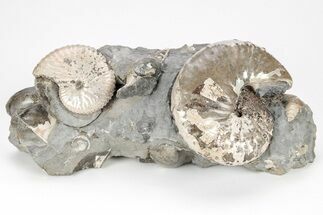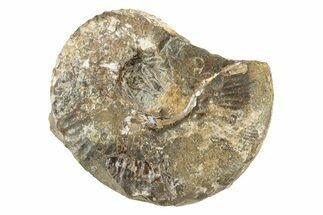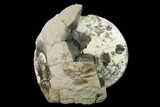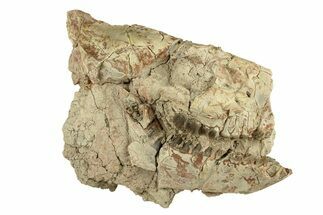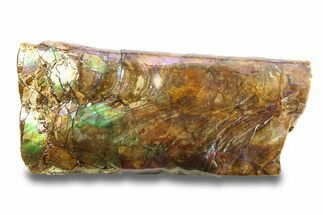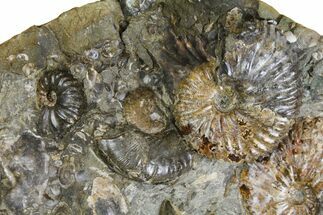This Specimen has been sold.
6.4" Fossil Ammonite (Sphenodiscus) in Rock - South Dakota
This is a large Sphenodiscus sp. ammonite that was collected from the Fox Hills Formation of South Dakota. Most of it has been prepped free of the hard concretion it was found in. Portions of the shell exhibit gorgeous iridescence.
There are repaired cracks through the ammonite where the nodule split during collections. The ammonite also broke within the rock during fossilization, explaining the shift in the ammonites orientation. It comes with an acrylic display stand.
There are repaired cracks through the ammonite where the nodule split during collections. The ammonite also broke within the rock during fossilization, explaining the shift in the ammonites orientation. It comes with an acrylic display stand.
These 70 million year old ammonites lived when South Dakota was a shallow inland sea. They were found preserved in concretions when split open. They then had to be hand-prepared to remove the hard rock surrounding them from their shells, a very time consuming task.
Ammonites were predatory cephalopod mollusks that resembled squids with spiral shells. They are more closely related to living octopuses, though their shells resemble that of nautilus species. True ammonites appeared in the fossil record about 240 million years ago during the Triassic Period. The last lineages disappeared 65 million years ago at the end of the Cretaceous.
SPECIES
Sphenodiscus sp.
LOCATION
South Dakota
FORMATION
Fox Hills Formation - Trail City Member
SIZE
6.4" Wide ammonite, entire specimen is 6.6 x 6.4"
CATEGORY
SUB CATEGORY
ITEM
#143840
We guarantee the authenticity of all of our
specimens. Read more about our
Authenticity Guarantee.
specimens. Read more about our
Authenticity Guarantee.
 Reviews
Reviews

